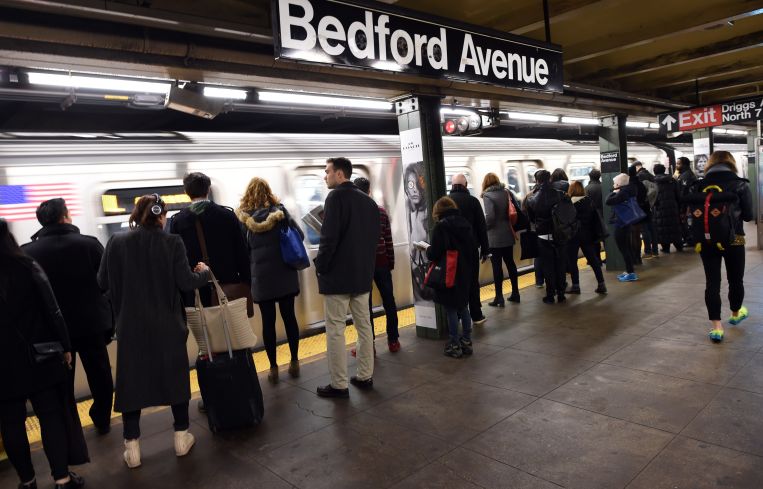Cuomo Cancels Full L Train Shutdown in Favor of Reduced Service
By Rebecca Baird-Remba January 3, 2019 7:14 pm
reprints
Gov. Andrew Cuomo scrapped plans for a 15-month-long shutdown of the L train between Brooklyn and Manhattan and announced a new plan this afternoon that would limit L train service on nights and weekends for 15 to 20 months.
After taking an impromptu late-night tour of the L train’s underwater tunnel last month, the governor decided to develop his own approach to rebuilding the tunnel beneath the East River. He apparently convened a panel of engineering experts from the faculty of Cornell University and Columbia University to “streamline the required repair work and limit the impact” on L train service, which ferries 400,000 riders a day between North Brooklyn and Lower Manhattan. Work on the 1.5-mile-long tunnel would be done on nights and weekends, with a single track open to provide service in both directions.
The cross-river portion, known as the Canarsie Tunnel, was damaged when Superstorm Sandy flooded it with millions of gallons of saltwater in 2012. The flooding weakened the cement bench wall that holds the power cables and other subway infrastructure in the tunnel, forcing the MTA to repair the bench wall or risk pieces of the tunnel falling into the tracks.
The Metropolitan Transportation Authority had originally planned to shutter L train service between Bedford Avenue in Brooklyn and First Avenue in Manhattan for 15 months beginning on April 27. The transit agency’s plan called for replacing all 32,000 feet of bench wall and installing 126,000 feet of new power cable and 176,000 feet of communications cable inside the wall.
City and state transportation officials have spent three years hosting public meetings—first to decide what approach they should take to repairing the tunnel, and later to develop a mitigation plan that would allow riders to take buses and ferries in lieu of the train. The MTA claimed that a 15-month shutdown was the fastest and cheapest way to fix the tunnel. The agency also considered shutting down one track at a time on nights and weekends for a few years, but transportation planners ultimately felt that it would be too long, costly and potentially unsafe for workers in the narrow tunnel.
Under the new plan, workers will leave the bench wall and the cables inside it and wrap the wall in fiberglass. Unstable portions will be repaired, and the rest will remain as is. Then a new system of electrical cables and sensors will be attached to racks along the sides of the wall. “Smart” fiber optic cables would be installed to detect cracks in the bench wall.
“It is a design that has not been used in the United States before, to the best of our knowledge,” Cuomo said during today’s press conference. “It has been implemented in Europe. It has never been implemented in a tunnel restoration project. They came up with that design suggestion. It uses many new innovations that are new to, frankly, the rail industry in this country. But the MTA has gone through their recommendations and gone through the new design, and the MTA believes that it is feasible.”
Acting MTA Chair Fernando Ferrer said in a statement that the organization “appreciate[s] the dedication and the analysis provided by this group of experts,” and “the guidance and recommendations we have received today will ease the strain on customers and help us ensure we are providing a consistently reliable service.” However, after the press conference, MTA board member Veronica Vanterpool told amNY reporter Vincent Barone that the MTA board had not yet been briefed on the plan, and she questioned whether it was truly a long-term fix.
Manhattan Borough President Gale Brewer said that she was skeptical but cautiously optimistic about the new plan.
“I want to know how we got this far in a years-long planning process for the shutdown without this new option coming up, but if the engineering is sound, then we should take yes for an answer and avoid a full shutdown,” she said in a statement. “Even if we manage to limit service suspensions to one tube only on nights and weekends, that will still dramatically limit L train capacity in Manhattan at those times. This means MTA’s and city [Department of Transportation’s] joint plans for enhanced bus service and other mitigation measures must still go forward.”
The MTA has committed to four public meetings on the new plan in Manhattan and Brooklyn, according to a release from Brewer’s office.


